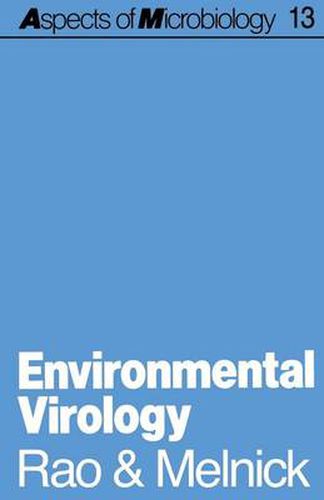Readings Newsletter
Become a Readings Member to make your shopping experience even easier.
Sign in or sign up for free!
You’re not far away from qualifying for FREE standard shipping within Australia
You’ve qualified for FREE standard shipping within Australia
The cart is loading…






This title is printed to order. This book may have been self-published. If so, we cannot guarantee the quality of the content. In the main most books will have gone through the editing process however some may not. We therefore suggest that you be aware of this before ordering this book. If in doubt check either the author or publisher’s details as we are unable to accept any returns unless they are faulty. Please contact us if you have any questions.
We have attempted to provide a concise and up to date account of human viruses in the environment with attention to basic tools now available for monitoring viruses. We have aimed this introductory volume at young students, teachers and investigators in microbiology, virology, environmental engineering and health sciences. As the routes for virus dissemination become more varied, there is an enhanced potential for causing infection in humans. Improvement in the development of control strategies will alleviate the magnitude of viral pollution of the environment. This volume will introduce the reader to an area of science which of necessity must utilize a variety of disciplines. V.CHALAPATIRAO JOSEPH L. MELNICK v We humbly dedicate this volume to the cherished memory of our parents Contents Preface v 1 Introduction 1 References 9 2 Human enteric viruses in polluted water 10 Enteroviruses 10 Hepatitis A virus 11 Non-A, non-B hepatitis 12 Norwalk and Norwalk-like agents 12 Rotaviruses 13 Adenoviruses 13 Parvoviruses 14 Enteric viruses in the etiology of water-borne disease 14 Summary 16 References 16 3 Monitoring for viruses in wastewater and water 18 Why water should be monitored for viral contamination 18 Methods for monitoring viral contamination 19 Virus isolation from sewage, and surface and drinking water 25 Indicators for viruses 30 Standards for viruses in drinking water 32 Future developments in virus detection 33 Summary 38 References 39 4 Virus removal by treatment processes 41 Advanced waste treatment (tertiary treatment) 46 Disinfection 49 Summary 54 References 54
$9.00 standard shipping within Australia
FREE standard shipping within Australia for orders over $100.00
Express & International shipping calculated at checkout
This title is printed to order. This book may have been self-published. If so, we cannot guarantee the quality of the content. In the main most books will have gone through the editing process however some may not. We therefore suggest that you be aware of this before ordering this book. If in doubt check either the author or publisher’s details as we are unable to accept any returns unless they are faulty. Please contact us if you have any questions.
We have attempted to provide a concise and up to date account of human viruses in the environment with attention to basic tools now available for monitoring viruses. We have aimed this introductory volume at young students, teachers and investigators in microbiology, virology, environmental engineering and health sciences. As the routes for virus dissemination become more varied, there is an enhanced potential for causing infection in humans. Improvement in the development of control strategies will alleviate the magnitude of viral pollution of the environment. This volume will introduce the reader to an area of science which of necessity must utilize a variety of disciplines. V.CHALAPATIRAO JOSEPH L. MELNICK v We humbly dedicate this volume to the cherished memory of our parents Contents Preface v 1 Introduction 1 References 9 2 Human enteric viruses in polluted water 10 Enteroviruses 10 Hepatitis A virus 11 Non-A, non-B hepatitis 12 Norwalk and Norwalk-like agents 12 Rotaviruses 13 Adenoviruses 13 Parvoviruses 14 Enteric viruses in the etiology of water-borne disease 14 Summary 16 References 16 3 Monitoring for viruses in wastewater and water 18 Why water should be monitored for viral contamination 18 Methods for monitoring viral contamination 19 Virus isolation from sewage, and surface and drinking water 25 Indicators for viruses 30 Standards for viruses in drinking water 32 Future developments in virus detection 33 Summary 38 References 39 4 Virus removal by treatment processes 41 Advanced waste treatment (tertiary treatment) 46 Disinfection 49 Summary 54 References 54